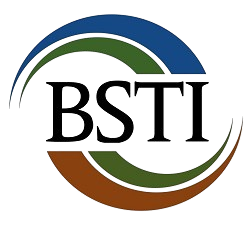
The Problem
A multi-unit residential building in an urban setting was in the process of being purchased in a real estate transaction. A review of historic environmental reports and documents identified a former underground heating oil storage tank (UST) that existed under the basement concrete slab. The UST was closed-in-place, but historic investigation and soil sample analyses verified the presence of heating oil-related impacts at levels above regulatory limits for residential properties in soils at the site.
Due to the concentrations of heating-oil compounds detected in soils, the site would have had to ultimately enter the state’s regulatory cleanup process. To navigate this process, BSTI developed a comprehensive field investigation for defining the extent and degree of apparent impacts to soils. What further complicated matters was the excessive depth (> 17 feet) of impacted soils in a basement with limited access and overhead space. Structural evaluation, confined space work and probable shoring of the future excavation and sampling area would be necessary and expensive.
The Pivot
Prior to implementing the remedial investigation and regulatory notifications, BSTI scientists proficient in the state’s regulatory process thought to investigate if any rule changes were possibly forthcoming. We were pleasantly surprised when we identified a very recent update to the state’s voluntary cleanup program that applied to our project. Specifically, a public bulletin from two weeks prior contained a proposed increase in the residential medium specific concentrations (MSCs) for the two (2) heating-oil compounds that were problematic at our site. After verifying the proposed changes and the rule making process with the regulatory agency, BSTI generated a professional opinion that summarized these significant changes and provided expert guidance to the stake holders. The result was that no further action would be necessary should the promulgation of the new MSCs go into effect. BSTI also provided rationale based on the where the proposed MSCs were in the rule making process that added comfort that the new MSCs would likely be adopted.
The Benefit
By wisely evaluating historical documents, current regulatory and project conditions and knowledge of future regulatory changes on the horizon, BSTI was able to swiftly bring about the best possible outcome for the client, project stakeholders and real estate transaction without additional characterization, remediation and environmental closure activities. Overall, BSTI saved the client over 90% of projected total costs by finding a desirable “off-ramp” for the stakeholders on both sides of the transaction. In addition, the total expected time to bring closure to the site was reduced by possibly as much as 6 to 12 months. While discovery of historical environmental liabilities is alarming, BSTI’s practical approach to the project, familiarity with the state’s regulatory framework and promulgation of proposed regulations and pro-active strategic planning, the historical impacts were favorably resolved for our client with no lingering post-closure responsibilities. BSTI’s Project Manager for this project is Ethan Prout, P.G. Ethan can be contacted at eprout@bstiweb.com. Visit www.bstiweb.com for more information on our capabilities.






